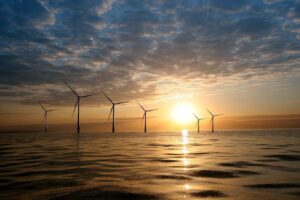 Responsible investing is a critically important way of driving social change and advancing environmental sustainability. Investing in environmentally and socially conscious businesses provide jobs and help the green economy to grow.
Responsible investing is a critically important way of driving social change and advancing environmental sustainability. Investing in environmentally and socially conscious businesses provide jobs and help the green economy to grow.
A judicious allocation of financial resources is essential in the face of environmental degradation, widespread scarcity, population expansion, accelerating consumption, climate change and unprecedented price volatility.
Investors have succeeded in pushing many companies to reduce the environmental footprint associated with their activities. It has been repeatedly demonstrated that investors can modify and control corporate behavior. They can help to grow the green economy and serve as valuable counterweights to unregulated free markets.
Financial institutions are also in a position to leverage their power over corporations. Providing financing to responsible firms while divesting from irresponsible corporations can go a long way to auger positive change.
Two of the best guidance documents on responsible investing come from the United Nations Environment Programme (UNEP) and the World Wildlife Fund (WWF).
Investing guidance in 10 key sectors
A 2011 UNEP report titled Investing in a Climate for Change, reviews how investments in 10 key sectors can create a low carbon world and grow the economy. According to the report, investing a mere 2 percent ($1.3 trillion) of global gross domestic could create a more sustainable global society.
The report advocates investments in agriculture, buildings, energy, fisheries, forestry, industry, tourism, transport, waste and water. According to the Nairobi-based agency, investments in these key sectors could reduce the global ecological footprint by nearly half over the next 40 years.
The report suggests that public investment could be a catalyst for massive private investors.
“Governments have a central role in changing laws and policies, and in investing public money in public wealth to make the transition possible. By doing so, they can also unleash the trillions of dollars of private capital in favour of a green economy,” said Pavan Sukhdev, head of UNEP’s Green Economy Initiative.
Investing guidance in 10 key commodities
The new World Wildlife Fund’s (WWF) responsible investing guide titled The 2050 Criteria, is a groundbreaking new document that provides valuable information in 10 major commodities sectors. This guide is a navigation tool designed to traverse the dynamic landscape of 21st century commodities investing. The practical recommendations in the 2050 Criteria are born out of the marriage of environmental science and sustainability.
The WWF report was released on September 25, 2012 at the Global AgInvesting Conference in Singapore. The conference brought together hundreds of allocators, fund managers, and industry executives to discuss a wide array of agriculture issues.
The WWF Criteria help investors, banks and analysts to invest in an environmentally and socially responsible fashion. Combining scientific, industry, and financial insights, the new WWF guide makes it easier to assess responsible investments in agriculture, forest and seafood.
By adopting the guidance in The 2050 Criteria, financiers will be able to:
- Manage critical business and reputational risks
- Reduce transaction costs and simplify decision making by aligning investment Criteria with leading industry practice
- Contribute to improved risk adjusted returns
- Shape responsible practices on the ground in these high-impact sectors
The 2050 Criteria focuses on 10 key commodity sectors, including aquaculture, beef, cotton, dairy, palm oil, soy, sugar, wood, wild seafood, and bioenergy. These commodity sectors were selected because they are in high demand and they are known to have an adverse impact on biodiversity.
“Current land, energy, water, and weather constraints are placing unprecedented pressure on humankind’s ability to access its most basic goods” the WWF says. “Yet humanity must now produce more food in the next four decades than we have in the last 8,000 years of agriculture combined. There is no choice but to do so sustainably.”
These two guidance documents from UNEP and the WWF are directing crucial financing and providing investors with effective tools to help drive corporate behavior.
——————-
Richard Matthews is a consultant, eco-entrepreneur, green investor and author of numerous articles on sustainable positioning, eco-economics and enviro-politics. He is the owner of The Green Market Oracle, a leading sustainable business site and one of the Web’s most comprehensive resources on the business of the environment. Find The Green Market on Facebook and follow The Green Market’s twitter feed.
Image credit: Vattenfall, courtesy Fotopedia




can we invest in ethical funds? Any media talk on this..!!